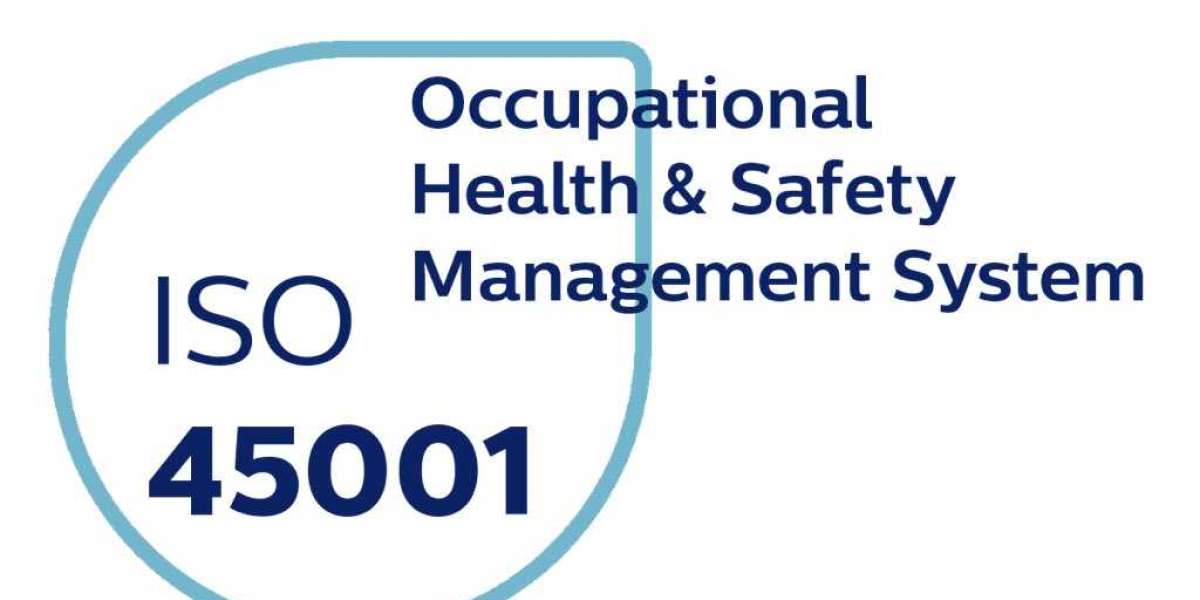Introduction:
Occupational safety is a paramount concern for organizations worldwide. To address this, many businesses adopt international standards such as ISO 45001 to establish and maintain effective Occupational Health and Safety Management Systems (OHSMS). In Pakistan, the implementation of ISO 45001 is gaining prominence as companies recognize the importance of safeguarding their workforce. This article will delve into the key aspects of ISO 45001, focusing on audit objectives and criteria, shedding light on how organizations can achieve and maintain certification.
Understanding ISO 45001:
ISO 45001 is an internationally recognized standard that outlines the requirements for establishing, implementing, maintaining, and continually improving an OHSMS. The standard is designed to assist organizations in proactively managing occupational health and safety risks, ensuring a safe and healthy working environment for employees and stakeholders. ISO 45001 in Pakistan, where workplace safety is a critical concern, ISO 45001 has become a valuable tool for organizations looking to enhance their commitment to employee well-being.
Audit Objectives:
Conducting audits is an integral part of the ISO 45001 certification process. Audits serve as a systematic and objective evaluation of an organization's OHSMS to ensure compliance with the standard's requirements. The primary objectives of ISO 45001 audits in Pakistan are as follows:
1. Compliance Assessment:
The foremost objective of ISO 45001 audits is to assess the organization's compliance with the standard's requirements. Auditors evaluate whether the OHSMS aligns with ISO 45001's guidelines, identifying areas of conformity and nonconformity.
2. Risk Identification and Mitigation:
Audits aim to identify potential occupational health and safety risks within the organization. By recognizing hazards and assessing their impact, companies in Pakistan can take proactive measures to mitigate risks, creating a safer working environment.
3. Continuous Improvement:
ISO 45001 emphasizes the importance of continual improvement. Audits serve as a tool to assess the effectiveness of corrective and preventive actions taken by organizations in Pakistan. This iterative process ensures that the OHSMS evolves to address emerging challenges and opportunities.
4. Employee Involvement and Training:
Auditors evaluate the involvement of employees in the OHSMS and assess the effectiveness of training programs. This ensures that the workforce in Pakistan is adequately informed and engaged in maintaining a safe workplace.
5. Legal Compliance:
ISO 45001 audits verify whether the organization complies with relevant legal and regulatory requirements in Pakistan. Ensuring adherence to local laws is crucial for avoiding legal consequences and fostering a culture of responsibility.
Audit Criteria:
The audit criteria for ISO 45001 certification in Pakistan are established based on the requirements outlined in the standard. These criteria serve as benchmarks against which organizations are evaluated during the audit process. Key audit criteria include:
1. Policy and Leadership:
Auditors assess the organization's commitment to occupational health and safety through the existence of a documented policy, leadership involvement, and the establishment of roles and responsibilities. This ensures that a strong foundation for OHS management is in place.
2. Planning:
The planning phase involves risk assessment, hazard identification, and the development of objectives to address occupational health and safety issues. Auditors in Pakistan evaluate the effectiveness of the organization's planning processes in mitigating risks and enhancing workplace safety.
3. Implementation and Operation:
This criterion focuses on the implementation of the OHSMS, including resource allocation, competence development, and communication. Auditors verify whether procedures are in place to effectively execute the organization's occupational health and safety policies.
4. Performance Evaluation:
Audits assess how organizations monitor, measure, analyze, and evaluate their OHSMS performance. This includes the measurement of key performance indicators (KPIs) and the analysis of data to ensure continual improvement.
5. Continual Improvement:
The continual improvement criterion evaluates the organization's processes for learning from incidents, implementing corrective actions, and striving for excellence in occupational health and safety. This ensures that the OHSMS evolves to meet changing circumstances in Pakistan.
ISO 45001 in Pakistan:
The adoption of ISO 45001 in Pakistan is driven by a growing awareness of the importance of occupational health and safety. As organizations seek to enhance their workplace environments, certification to ISO 45001 has become a tangible demonstration of commitment to employee well-being.
ISO 45001 Certification in Pakistan:
Attaining ISO 45001 Certification in Pakistan is a significant achievement for organizations aiming to establish themselves as leaders in occupational health and safety. The certification process involves a thorough examination of the OHSMS through initial and surveillance audits conducted by accredited certification bodies.
1. Preparation and Documentation:
Organizations in Pakistan preparing for ISO 45001 certification must develop and implement the necessary documentation, including the OHS policy, risk assessments, and procedures. Thorough preparation ensures a smoother certification process.
2. Initial Audit:
The initial audit is a comprehensive examination of the organization's OHSMS to determine its conformity with ISO 45001 requirements. This stage identifies areas of improvement and nonconformities that must be addressed before certification can be granted.
3. Corrective Actions:
Following the initial audit, organizations in Pakistan must implement corrective actions to address identified non-conformities. This may involve refining processes, enhancing training programs, or modifying documentation to align with ISO 45001 standards.
4. Surveillance Audits:
After certification is granted, surveillance audits are conducted periodically to ensure the ongoing effectiveness of the OHSMS. These audits provide organizations in Pakistan with valuable feedback, allowing them to continually improve their occupational health and safety practices.
5. Continuous Improvement:
ISO 45001 Certification in Pakistan serves as a catalyst for continuous improvement. Organizations in Pakistan are encouraged to use the feedback from audits to enhance their OHSMS, demonstrating a commitment to the well-being of their employees.
Conclusion:
In conclusion, ISO 45001 plays a crucial role in promoting occupational health and safety in Pakistan. The audit objectives and criteria outlined in the standard serve as a roadmap for organizations striving to create a safe and secure working environment. Achieving ISO 45001 certification in Pakistan is a testament to an organization's commitment to employee well-being and sets a benchmark for excellence in occupational health and safety management. As the adoption of ISO 45001 continues to grow, businesses in Pakistan are poised to reap the benefits of enhanced safety practices and a culture of continuous improvement.












